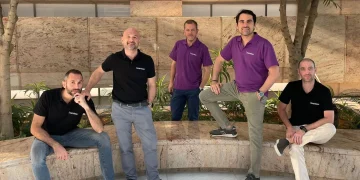UAE residents are expected to experience slower internet speeds and intermittent disruptions for up to six weeks following major damage to subsea cables in the Red Sea. The incident has disrupted international connectivity and placed added pressure on the country’s telecom infrastructure.
What Happened
Several undersea fibre-optic cables, including key systems that connect Asia, the Middle East, and Europe, were damaged in early September. These cables form a vital backbone of global internet traffic. With the disruption, data is being rerouted through longer and less efficient paths, resulting in slower speeds and higher latency.
Both of the UAE’s main providers, Etisalat by e& and Du, have confirmed service slowdowns, with noticeable effects on streaming, video calls, and cloud-based services.
Why Repairs Could Take Six Weeks
Repairing subsea cables is a highly complex operation. Several factors contribute to the lengthy restoration period:
- Locating the fault: Pinpointing the exact break requires specialised surveying equipment.
- Repair ship deployment: Specialised ships must retrieve, splice, and re-lay the cables. These vessels are limited and may not be immediately available.
- Challenging conditions: Weather, sea conditions, and regional security issues in the Red Sea can delay repair work.
- Testing and re-routing: After repair, cables must be thoroughly tested before normal traffic resumes.
Experts estimate that full restoration could take anywhere from two to six weeks, depending on conditions.
What Residents Can Expect
During this period, UAE residents may face:
- Noticeably slower international browsing and streaming speeds
- Delays and buffering during peak hours
- Higher latency in cloud services, VPNs, and video conferencing
- Gradual but incomplete recovery until full repairs are finalised
Longer-Term Implications
The disruption underscores the vulnerability of global internet infrastructure. Much of the world’s traffic depends on a handful of subsea routes, leaving regions exposed to single points of failure.
In the UAE, the incident has prompted renewed discussions about diversifying connectivity. Options include developing more terrestrial fibre routes, encouraging satellite internet services, and building additional redundancy for data-driven industries such as cloud computing and artificial intelligence.
Coping Strategies for Users
While repairs are underway, residents and businesses can mitigate the impact by:
- Using offline modes and local storage where possible
- Accessing services hosted closer to the region
- Scheduling heavy downloads or updates during off-peak hours
- Exploring backup connections, including mobile data or alternative providers
Conclusion
With repairs expected to take several weeks, UAE residents should prepare for a prolonged period of slower internet. The situation underscores the importance of resilient digital infrastructure and may prompt increased investment in alternative connectivity solutions across the region.














